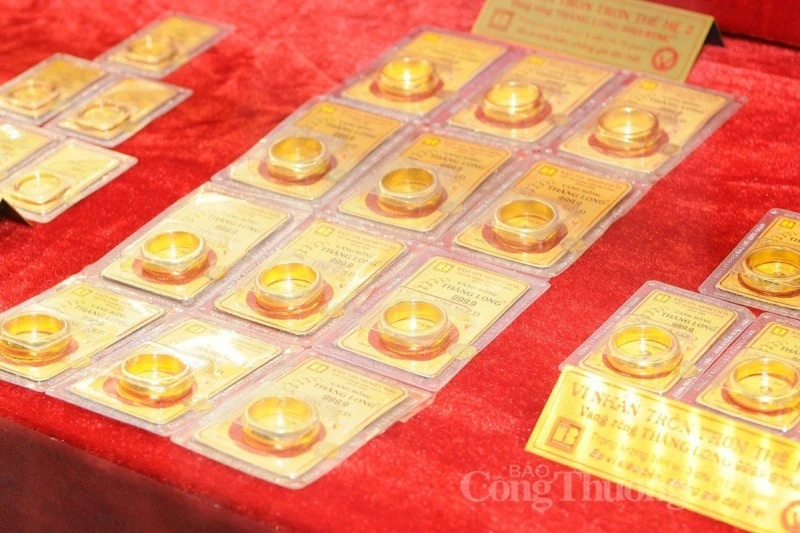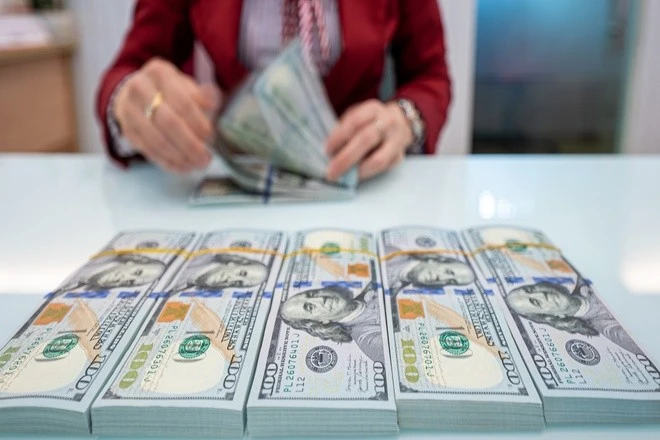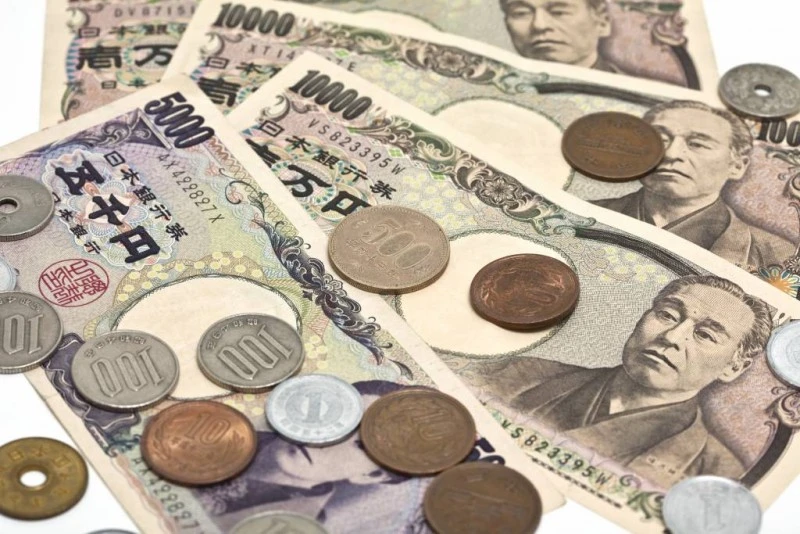Domestic gold price "static", world price drops sharply
SJC gold is "frozen" at 89.5 million VND/tael, while world gold recorded a sharp weekly decrease of approximately 3.4%.
At the time of survey at 5:00 a.m. on May 26, 2024, the gold price on the trading floors of some companies was as follows:

Today's 9999 gold price is listed by DOJI at 87.50 million VND/tael for buying and 89.30 million VND/tael for selling.
At Mi Hong Gold and Gemstone Company, the price of Mi Hong gold at the time of survey listed the price of SJC gold at 88.50 - 89.50 million VND/tael (buy - sell).
SJC gold price at Bao Tin Minh Chau Company Limited is also traded by the enterprise at 87.65 - 89.30 million VND/tael (buy - sell).
According to Kitco, the world gold price recorded at 5:00 a.m. today, Vietnam time, was at 2,334.11 USD/ounce. Converted according to the current exchange rate at Vietcombank , the world gold price is about 70.799 million VND/tael (excluding taxes and fees). Thus, the price of SJC gold bars is still 16.701 million VND/tael higher than the international gold price.
Gold fell to around $2,330 an ounce on Friday, closing in on a two-week low and on track for its first weekly decline in three, as investors reduced expectations for a Fed rate cut following recent U.S. economic data.
USD accelerates week
The world USD recorded an accelerating week with 4 consecutive increasing sessions, up 0.3% during the week.
The central VND/USD exchange rate today (May 26) was announced by the State Bank at 24,264 VND/USD, an increase of 6 VND compared to the trading session on May 24.

Currently, the exchange rate allowed for trading by commercial banks ranges from 23,400 - 25,450 VND/USD. The US Dollar exchange rate has also been brought to the buying and selling range by the State Bank of Vietnam from 23,400 to 25,450 VND/USD.
In global markets, the dollar index fell to 104.75 on Friday, pausing after four consecutive sessions of gains, as traders continued to assess the timing of the Fed's first rate cut.
Still, the dollar remains well positioned to continue its gains, supported by upbeat US economic data that has dampened market expectations of a rate cut.
Japanese Yen exchange rate continues to decline
The Japanese Yen exchange rate continued its downward trend at the end of the week. Surveyed on the morning of May 26, 2024, the Japanese Yen exchange rate at banks is as follows:
At Vietcombank , the Vietcombank Japanese Yen exchange rate is 157.13 VND/JPY and the selling rate is 166.31 VND/JPY.
Vietinbank, Yen exchange rate is equivalent to 158.01 VND/JPY for buying and 167.71 VND/JPY for selling.

At BIDV Bank, the Japanese Yen exchange rate reached 158 VND/JPY for buying and 166.4 VND/JPY for selling.
Agribank, the Japanese Yen buying and selling rates are 158.46 VND/JPY and 166.26 VND/JPY.
At Eximbank, the buying price is 159.44 VND/JPY and the selling price is 164.82 VND/JPY.
Techcombank, Japanese Yen exchange rate is 155.48 VND/JPY for buying and 167.95 VND/JPY for selling.
At Sacombank, the Japanese Yen exchange rate corresponds to 160.23 VND/JPY for buying and 165.24 VND/JPY for selling.
NCB Bank, Japanese Yen exchange rate is 157.92 VND/JPY for buying and 166.47 VND/JPY for selling.
Rubber continues to rise
World rubber price update at 5:00 a.m. on May 26, 2024 (Vietnam time) recorded the price in the 7th consecutive day of increase in all terms.
At the Tokyo Commodity Exchange (TOCOM), RSS3 rubber prices continued to remain high, fluctuating at 325.5 - 331.0 JPY/kg.

Domestically, at rubber companies, the purchase price of raw rubber latex is currently maintained at around 283 - 312 VND/TSC. Of which, Phu Rieng Rubber Company maintains the purchase price at 285 - 305 VND/TSC, stable compared to the end of last month. Binh Long Rubber Company maintains the purchase price at 285 - 295 VND/TSC. Ba Ria Rubber Company maintains the purchase price at 283 - 293 VND/TSC. Phuoc Hoa Rubber Company maintains the purchase price at 310 - 312 VND/TSC.
The reason for the high rubber price is that the rubber cultivation area in Thailand and Indonesia (accounting for 51% of the total global latex production) has continuously decreased and shows no signs of stopping due to diseases on rubber trees along with the trend of farmers switching to growing other industrial crops with higher economic efficiency when growing rubber trees takes 5-7 years to be able to tap latex./.
Source





























![[Photo] National Assembly Chairman Tran Thanh Man visits Vietnamese Heroic Mother Ta Thi Tran](https://vphoto.vietnam.vn/thumb/1200x675/vietnam/resource/IMAGE/2025/7/20/765c0bd057dd44ad83ab89fe0255b783)







































































Comment (0)